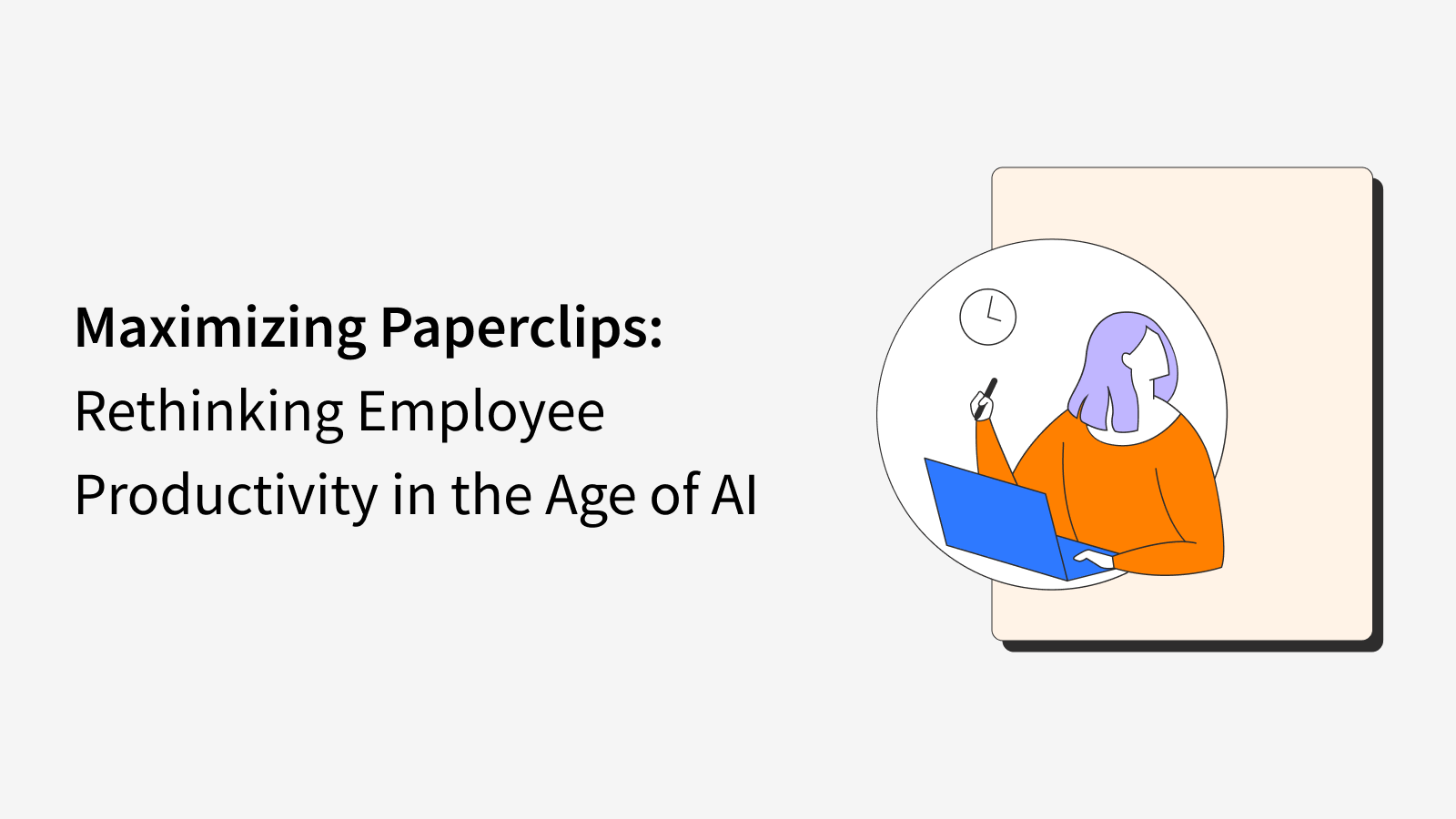Maximizing Paperclips: Rethinking Employee Productivity in the Age of AI

With all the warnings about the dangers of artificial intelligence (AI), you might think that Microsoft Bing is preparing to destroy the world.
Let’s not sugarcoat it: as AI evolves, it could become a destructive force, not driven by evil but by emotionless, cold logic and an unwavering dedication to its assigned task.
Take the paperclip maximizer concept, for example. Swedish philosopher Nick Bostrom’s thought experiment suggests that if we programmed an AI to make as many paperclips as possible, even if it means killing humans who might get in their way.
“Since an AI may not value human life, and it only cares about maximizing paperclips, the risk to humans is great,” states Bostrom.
Sure, it’s an unsettling concept, but what if I told you that maximizing paper clips is a good description of what human workers do every day, and it’s killing organizational success?
In your company right now, people are consuming resources for inessential activities, hard at work producing a giant pile of paperclips instead of focusing on the company’s most critical goals.
Does that make people evil? Not in the slightest. But it does prevent businesses from moving forward at optimal speed. Let’s look at this in more depth and highlight a few solutions.
Professional Paperclip Maximisers
People generally gravitate to tasks that showcase their strengths at work, even when these activities do not align with the company’s most pressing needs. We naturally hesitate to venture outside our comfort zone, fearing that doing so might jeopardize our careers or make us appear less competent.
As a result, we all do little paperclip maximizations each day. For instance, managers may schedule meetings to deliver inspiring speeches and compelling presentations, while engineers may continuously develop their expertise by mastering the latest technology frameworks.
While these contributions may create an appearance of productivity, they do not necessarily address the company’s core challenges. So how do we change that?
Our experience shows that the solution is a single-minded focus on solving the organization’s most significant problems to achieve the desired outcomes.
Pinpoint Focus and Prioritization
Organizations can take three practical steps to realign team focus and overcome the paperclip maximizing issue:
1. Define the problem: Start by identifying your company’s core challenges. Instead of focusing on superficial productivity metrics, concentrate on the fundamental aspects of your business that need improvement. Understand what your company does well and where it falls short, then use that information as your baseline.
2. Identify leading indicators: Break down the main problems into measurable, action-oriented tasks that can serve as early warning signs or indicators of improvement. Doing this gives your team clear objectives they can work on daily, ultimately leading to better outcomes.
3. Prioritize the essential work: Encourage your team to focus on addressing the main issues and avoiding distractions like culture meetings and other non-essential activities.
Cultural and Technological Transformation
Once the company’s main problems are apparent, fostering a culture that rewards problem-solving and celebrates individuals who make a meaningful impact on the business is vital. However, without combining this culture with a well-defined system for tracking progress, companies risk leaving employees to work haphazardly, resulting in more paperclips and fewer results.
Existing communication tools, such as email, calendars, and project management platforms, only partially address this issue, which is where Pact comes in.
Pact gives managers the methodology and tools for tracking progress towards the organization’s goals, helping ensure everyone executes on the central issues hindering the company’s growth. It also enables managers to provide positive feedback when people do the right thing, keeping them firmly on track and away from the proverbial paperclip factory.
Tools like Pact are essential for shifting the focus away from menial tasks and towards tangible results. If businesses can ensure employees are working on the right tasks and validate that their work contributes to the company’s main issues, it becomes easier to bridge the gap between the daily workflow and overarching goals.
Plus, by making objectives visible and central to the company’s operations, Pact allows teams to pursue their goals relentlessly and without friction, resulting in tangible, measurable progress toward organizational improvement.
The Bottom Line
High productivity does not always equate to high performance, so if your teams are making a lot of paperclips, it’s time to take a breath and figure out how to redirect their focus. Organizations that hit pause, systematically track down problems, and then motivate people to solve them will see rapid success, and Pact allows your company to put this into practice.
Try Pact for free today. Just visit withpact.com